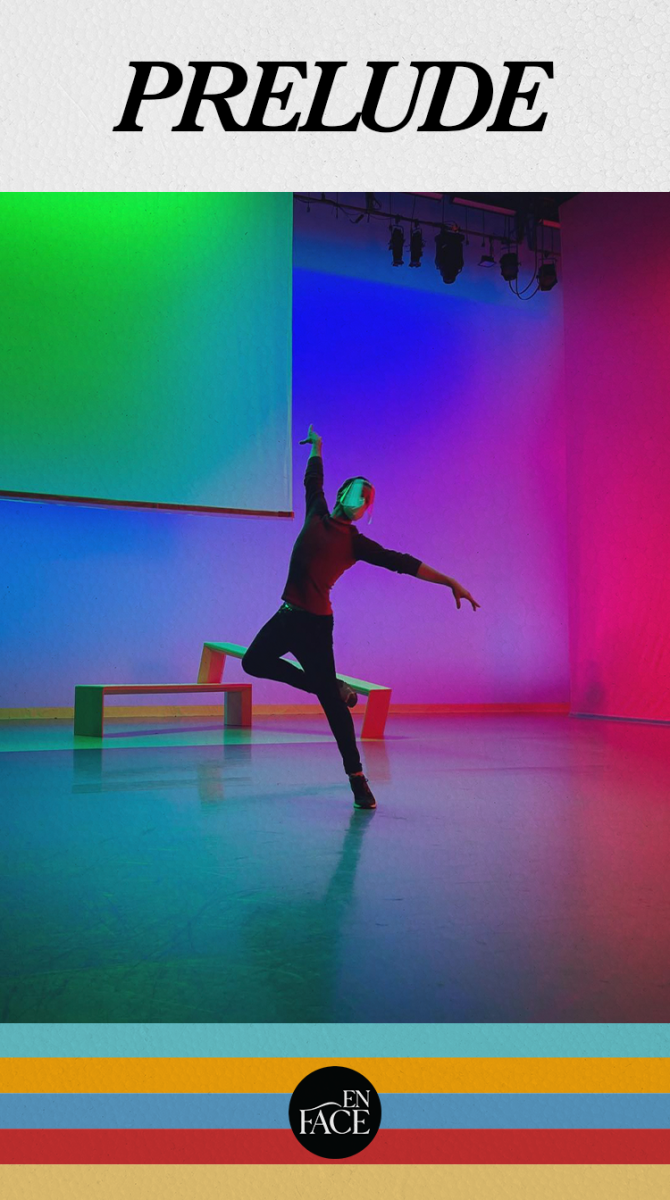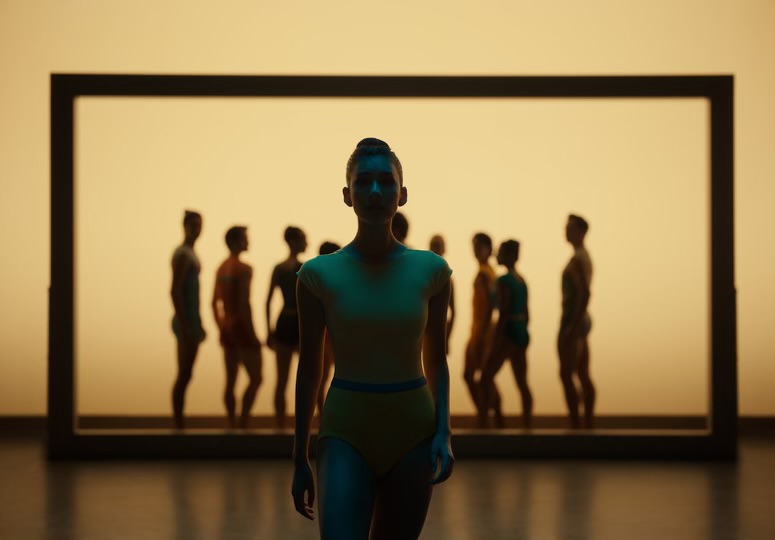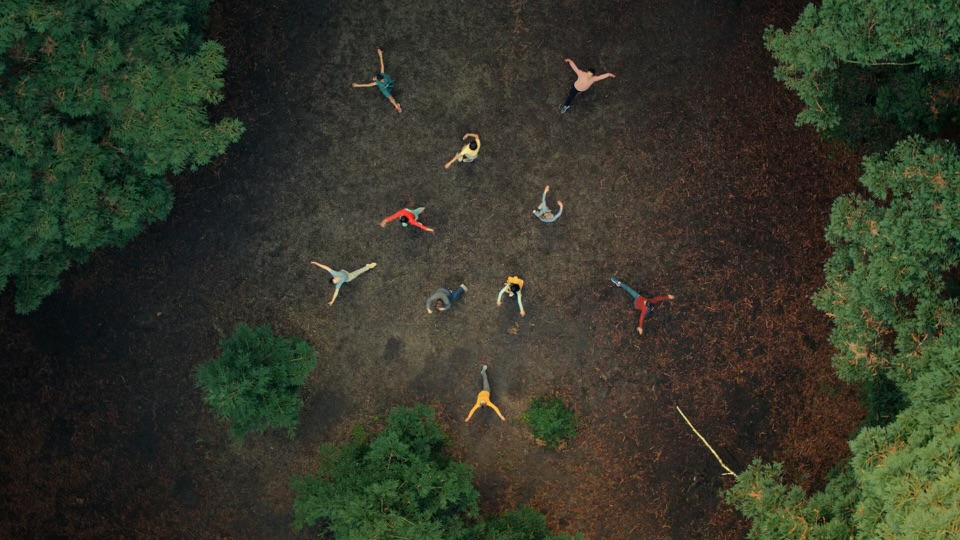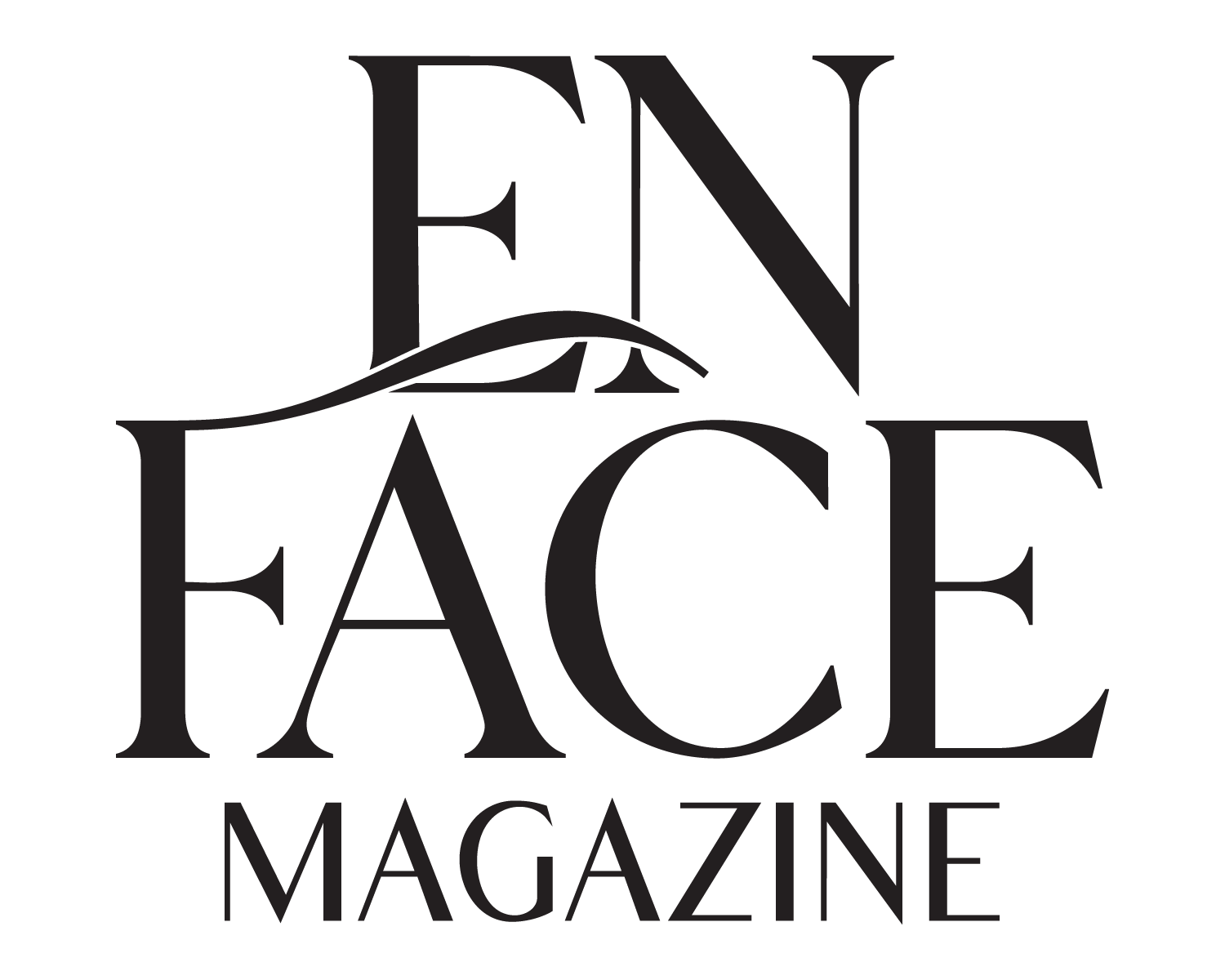
Myles Thatcher on set of the filming of COLORFORMS.
Prelude: A Look Inside The Inspirations of Myles Thatcher’s Ballet COLORFORMS
Thatcher’s COLORFORMS is a vibrant reflection on joy and imagination centering around one question – how do we relate to the physical spaces that hold our art? We were able to sit down with him and explore this question and how it transferred from the initial film made in collaboration with the San Francisco Museum of Modern Art, to this new iteration premiering on the stage.
Your works, your works often have themes, narratives, or visual motifs that create a cohesive and thought-provoking world. What is your creative process like and was it different in creating COLORFORMS?
Myles Thatcher: First of all, thank you. That’s great to hear. I always try to lean into subjects that are interesting to me, and sometimes they’re controversial, sometimes they’re not. Sometimes they’re a little heavy, and sometimes they’re really joyous.
This process has been different in my approach just because I’m reworking something from an existing piece of art that a lot of people have seen and enjoyed. So I’m feeling pressure to deliver that same feeling in a piece of work, which is still the same work but in a different medium.
We’re delivering something in theater with people who are sat down in the dark, able to focus, or required to focus, on just that. A lot of the driving forces for coming up with the COLORFORMS concept for film was figuring out how to maintain people’s attention span through an 18 minute film.
I have a hard time watching stage works through film because the pacing feels so different than if you’re live and present with the dancers. That’s always been more of a struggle for me.
As we were creating, we were like, okay, how do we continue to create contrast in both the movement and the editing and the story and the environments we’re in, so we can stay invested in it?
Understanding what audience we have now has been a big shift in the way we’re reworking things. When it comes to the dance aspect and the choreography, I’m always very collaborative. I aim to utilize the intelligence and the personalities of the dancers.
Especially with this piece, I really wanted to create a rubric or a platform to just watch the dancers freaking nail it. Just succeed. My goal is to give them something they can continue to play with and be present in. It doesn’t have to be the same from night to night, as long as they continue to challenge themselves. All of the solos and pas [de deuxs] are really hard I’m realizing as we’re doing it again.
An underlying theme of this piece is trying to embody the spirit of joy, wonder, and exploration. So we’re trying to tackle that with the narrative arcs, the costumes that also mirror that journey, and the scenic designs that are also mimicking that journey.
Can you tell us a little bit about your initial visual and thematic inspirations?
MT: This was initially commissioned for the stage before the pandemic hit all of our arts organizations. My initial inspirations were Alexander Calder‘s mobiles.
These early to mid-century pieces of work that are somehow perfectly balanced, but asymmetrical. Every piece has its own part to play in carrying the weight, and if you move one [piece], everything else shifts because of it.
That was just something that feels very connected to how our world works now. Also, it was a really fun theme to start kinetic movement with.
Then Helgi told me that it would have to be moved to a work for film. He was really open with how I wanted to approach that. The first thing I thought of was to work with The San Francisco Museum of Modern Art (SFMOMA) because I knew that they were also shut down. I’ve always loved going to SFMOMA and especially the Ellsworth Kelly exhibit.
Susan Roemer [the costume designer] had chosen the color palette for the piece even before then. A lot of things with SFMOMA just aligned with what we were doing.
With getting the licensing for the art, we made a wishlist and figured out what we could include and what we couldn’t. I feel really lucky that those things just worked – like Frances Chung’s red coat in that first Ellsworth Kelly room with the red and the yellow painting, it’s just amazing.
My approach to making the film, because we didn’t have the spaces to perform in, was essentially about the physical spaces that hold our art and what they represent to us and what they don’t represent to some people. I wanted to use this as an underlying way to expand outside of our traditional art spaces.
I wanted to both promote these art institutions, but also express that [art doesn’t] have to be held in these spaces. There’s art and beauty and wonder everywhere in the world, in something as simple as a paper airplane or a sketch or a forest.
A lot of the messaging was about finding magic in all of these places that you might not [see it] in right away. I think that’s really translating to the stage work as well.

San Francisco Ballet dancers in COLORFORMS (Dir. Ezra Hurwitz, Chor. Myles Thatcher, 2021, USA) © San Francisco Ballet
aAs a viewer, there is a sense that Colorforms comments on the idea of the context of art. The dancer’s have a sort of irreverent attitude taking over SFMOMA – running, playing, and referencing famous works. They break down this idea of how we are supposed to act in high brow spaces and remind us that the dancers themselves are truly a physical form of art. Meanwhile, we see the central figure take the journey of being an outsider, being welcomed in, and then leading the group to a new place. What was your intention narratively and what were you aiming to draw attention to?
MT: I think in the spirit of understanding that this is a deliverable that can be accessed by people who don’t necessarily come to our theater or feel welcomed in our theater or in a museum.
I understand fine arts can be intimidating for many different reasons. The price point, maybe not seeing yourself reflected on the stage. It’s a big topic that arts institutions are slowly trying to tackle and maybe not doing enough but that’s a bigger conversation.
I really wanted to try and break down some of these walls and the artifice of an intimidating space and say “no, it’s okay to have fun in these spaces”. It’s okay to be yourself in these spaces. I wanted to break as many rules as possible without actually breaking the rules and do all of the things that I wish I could do if I wasn’t surrounded by people.
With the central figures narrative, I wanted to touch on this, it’s a little subversive, but this idea that we revere all of these pieces of art that are curated by organizations and held in high regard and sold for millions and millions of dollars, but at the same time that’s not the beginning and the end of what we can find beautiful and what can inspire us.
And one is not necessarily better than the other.
MT: Yes. Exactly. I really think there’s space for all of it. I do not believe in the law of scarcity when it comes to art and exploration and play and wonder. There’s a boundless amount of space for everybody and there’s room for everybody to experience it as they are.
You’ve talked about adjusting from film to stage and the unique challenges of learning about film, but it also gives unique tools to carry a narrative and for transitions. Have you had to rethink or rework any of those elements for the stage to reflect the film?
MT: I really wanted to make something that would represent the essence of the film, but if you have no reference point, you would still enjoy it in a similar way.
As I’m building this for the stage [I’ve realized] the film has guided it into a more visually specific place that I think is going to pay off really well. It’s allowed us to understand what we’re making before it’s finished in a really clear way.
It’s been really fun to try and fill out all of the non dancing moments and transitions. Every decision that we’re making is trying to enhance the way the audience goes down the journey with her [the central figure] and how it’ll supplement the way that she steps into the world of Colorforms.
What is the relationship between the pedestrian costumes and the balletic costumes? And will this translate to the stage version?
MT: We’re going to be using all 30 costumes from the film for 10 dancers, which I’m excited about. We wanted to show where the imagination was taking the dancers. We found a way to still incorporate some of those concepts, but they’ll feel a little bit different because we don’t have the art of editing in real time. The costumes will be a unifying factor for the dancers as they have a deeper connection with each other.
Susan Roemer, the costume designer, is a genius. She’s really just incredible.
What are you most excited for for COLORFORMS becoming a stage work?
MT: I’m excited for people to see the ending of it. It is a big departure from the film aesthetically. I think it’s going to be really beautiful. I’m excited for people to experience that one thing that feels completely different than anything they’ve seen on the film.
Are any particular visual motifs from the film still carrying over, such as the paper planes?
MT: Yes. We wanted to boil these irreverent gestures down to one thing, and we decided to use the paper plane as the driving motif. It’s something that is so simple and accessible.
Anytime anybody sees [one of the paper plane props] in our building, even if it’s down in the offices, it always turns into paper plane throwing. It is such a driver for joy and everyone kind of turns into a kid again as they start playing with them. I love how it’s transformed our building into a playground. And that’s exactly what I wanna do with this piece too; allow people to find like play and magic in really little simple things.
This concept of joy seems very important to you. Where did this stem from?
MT: As an artist, I was getting to a place where I felt like I had to create things to get rehired, and I was putting a lot of pressure on myself to be serious and things had to be really deep. I think a lot of the times we think good art has to be serious art. And I think good art can be equally serious and joyful.
It can be deeply moving, but also be fun and we can have fun doing it. This is something that the older I get, the more I realize it is super important to me – in both my dancing and choreographic career. We work the best when we’re in a spirit of play, in a spirit of discovery.

San Francisco Ballet dancers in COLORFORMS (Dir. Ezra Hurwitz, Chor. Myles Thatcher, 2021, USA) © San Francisco Ballet
Infuse the spirit of play and discovery of Thatcher’s COLORFORMS into your own life by downloading the free, En Face Magazine exclusive, phone wallpaper here.
Read the COLORS OF DANCE playbill here.
Join us in the upcoming weeks as we explore the Preludes of other amazing works in the ballet community. Who do you want to hear from next? Let us know in the comments!
![]()

Thomas Baker is a retired dancer living in Williamsburg, Brooklyn. He loves all things performance, art, and design.
Alanna Love is a writer based out of Boise, Idaho. She revels in tracing the thread of beauty woven throughout daily life, especially when it is found in ballet, literature, or historical wardrobing.

Follow Us
Subscribe For Updates & Giveaways!
Stay up to date with exciting original content, upcoming performances, and giveaways unique to your community and beyond!
